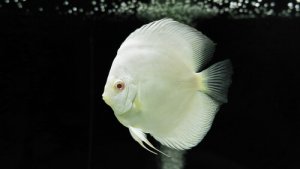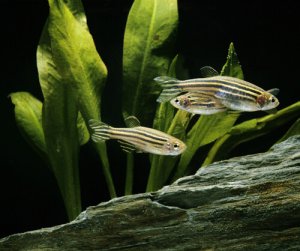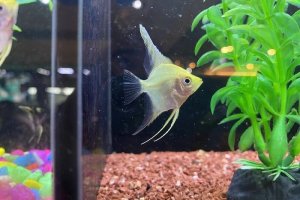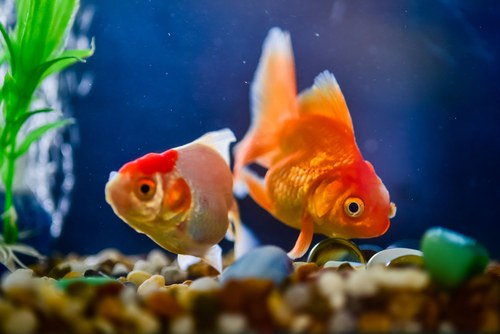
A goldfish is one of the most popular fish among aquarium hobbyists. The bright orange color and exceptional vibrancy have made them a favorite among domesticated fish species. In this article, we’ll show you how to increase the size of your goldfish family. In addition, our guide covers the mating process for goldfish, along with everything you need to know about their coupling rituals.
Set Up Tank Conditions For Breeding
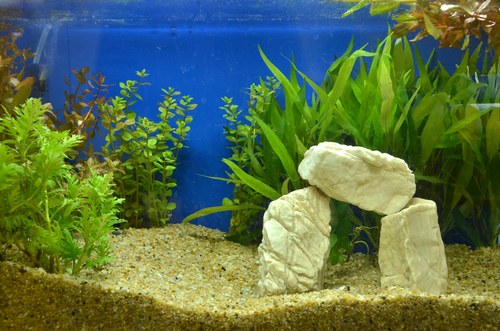
If you’re asking, “how do goldfish mate?” one of the first things you’ll come across in your search for answers is the importance of a breeding tank. Conditions in the tank are extremely vital for the health and mood of your goldfish. With enough planning and foresight, the first steps towards breeding can occur months before the male and female are placed in a tank together.
First, ensure that your goldfish are healthy and well-adapted to your tank. This means adjusting the parameters to encourage breeding. For goldfish, you should have temperatures between 70-75 degrees Fahrenheit. Reaching these temperatures can be done gradually over a few days. Changing the temperature suddenly can induce stress in your goldfish.
The water parameters should also be ideal for breeding. The best way to do this is by introducing regular water changes. A filter will also help immensely. If the water conditions your goldfish requires are not reached, your pet may struggle to survive and have little interest in breeding.
Additionally, your tank should have at least 20 gallons of water. This way, your fish can have a spacious environment. Finally, ensure the tank has a 2:1 male-to-female ratio for breeding purposes. This way, your male goldfish are encouraged to compete for the attention of females.
How To Know If Your Goldfish Are Ready To Mate
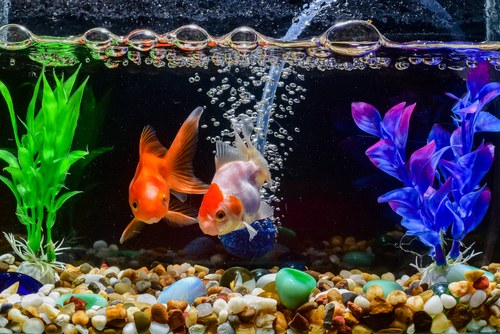
You may notice that male and female goldfish can be hard to tell apart from a distance. However, this is what you should look out for to identify the sex. First, a male goldfish tends to be slightly smaller than its female counterpart and usually has a more rigid and hard abdomen. It also has pointy pectoral fins that are noticeable on close inspection. The vent is also quite different for males, sporting a concave look that curves inwards rather than outwards.
Female goldfish mating behavior tends to be noticeably different from males. Still, you can use some aspects of their appearance to tell their gender. The shape of its vent is usually more convex and rounded. Meanwhile, its abdomen is generally quite soft and movable.
Male goldfish tend to show interest in mating with some physical attributes. First, they develop white spots called breeding tubercles on their fins and heads. These spots aren’t just decorative; they help the male maintain a grip on the female during mating.
On the other hand, female goldfish also tend to develop their own white spots. These usually appear much smaller than those of their male counterparts. They’ll also begin to display signs of changed behavior, such as chasing the males around and vice versa. This is part of a mating dance performed by goldfish. In addition, as she begins to produce eggs, her belly will swell noticeably.
How To Make Your Goldfish Mate?
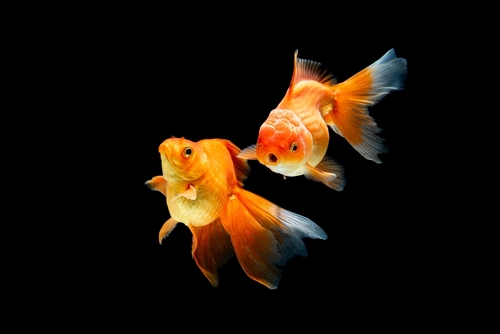
1. Choosing Your Breeders
First, you have to select suitable goldfish for breeding. With the right choice, you can save time with trial and error. Here’s how. Find a male goldfish with fast swimming abilities and a larger size that is approximately above 4 inches, with an ideal length of 6 inches. For female goldfish, ensure that she has a larger rear than most and a substantially bigger pectoral area. It also helps if the choices you’ve selected can display the goldfish mating behavior we’ve highlighted above.
Ideally, your tank should contain your two best picks among the males and one among the females. This is to encourage some activity from the males to fight for the attention of the female.
2. Goldfish Mating Process
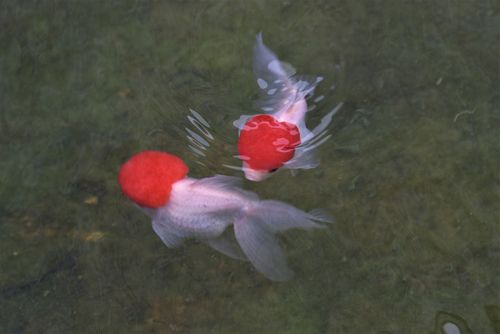
● Spawning: Now that you’ve got the fish together in a suitable tank, it’s time to get them to mate. How do goldfish mate? Well, now that you’ve identified your pairs, you’ll just have to let the mating process take place when your pets are ready.
When they are ready to mate, your aquatic friends begin a mating ritual called spawning. Here, the male goldfish chases the female, nipping at her fins and hanging around her. You’ll notice him nudging at her belly with his nose. This gets her relaxed and free enough to release her eggs. It is a noticeably gentle interaction between them, so you should not see this as aggression.
The male goldfish will wait for the females to drop their eggs over a plant in your tank, and a male will spray its sperm over the eggs for fertilization to begin. Multiple males are capable of fertilizing eggs in a process known as superfetation. You might not even notice that this has taken place. Still, there are ways to identify if fertilization has occurred later on.
● Artificial Insemination: Suppose you’ve tried to encourage spawning between the male and female goldfish, and it doesn’t seem to work. In that case, it could be time for artificial insemination. With artificial insemination, “how do goldfish mate?” is no longer a point of focus.
You should prepare a shallow and smaller tank. Hold the male goldfish carefully and proceed to gently rub its vent, allowing it to produce sperm. Now, swirl this sperm in the water and then rub the female goldfish’s vent. This will get her to release the eggs. After this has been done, you have to swirl the water to combine the sperm and eggs.
● Fertilization: After spawning, removing the male goldfish or putting in a divider to prevent him eating the eggs is a good idea. Alternatively, you can move these eggs into a separate fry tank for safekeeping. This should be done carefully, though.
Once your female has released the eggs, you’ll need to ensure that fertilization can take place successfully. Remove any obstructive plants, rocks, or objects in your tank to encourage a smooth process. This should control where the eggs are located and avoid any accidents due to their fragility.
Once the eggs have been fertilized, it takes about a week to see them hatch. This fish species needs adequate water temperatures and conditions for incubation. Warmer water encourages fast hatching, but it comes with the risk of inducing stress in your adult goldfish.
Caring For Your Goldfish Fry
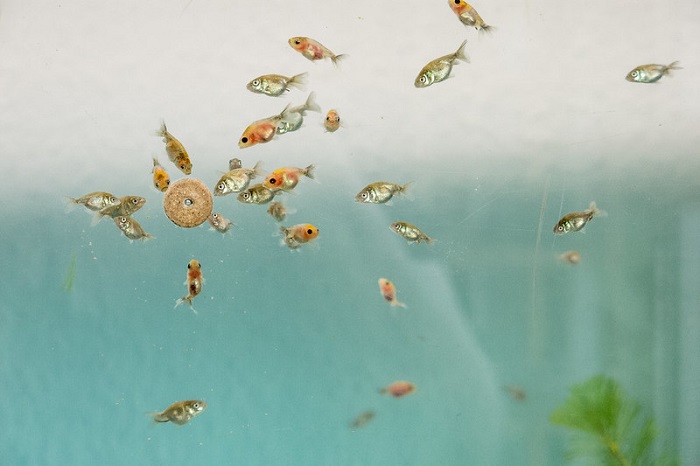
Now that the mating process and fertilization are complete, you can breathe a sigh of relief before getting back to work. “How do goldfish mate?” will naturally lead to the question of how you can take care of their fry. Goldfish fry are some of the most dependent creatures in an aquarium. Many dangers exist for these poor baby fish, including their parents suddenly developing an appetite for them.
Provide a spacious environment for the babies to swim in, encouraging them to learn complex movements and navigate around your tank. While raising these young goldfish, ensure that you’re not using an aggressive filter, or you’ll risk creating an unsafe environment for the young goldfish. Feeding should be focused on high protein foods to encourage growth. Be sure to give them food that can be consumed in less than 2 minutes. This is a good benchmark if you’re looking to avoid the consequences of overfeeding.
While caring for your fry, you should keep them away from other fish to avoid any possible diseases or infections. The occasional quarantine is acceptable, but don’t make this a habit, as they need to fully adapt to tank conditions for successful growth.
Final Thoughts
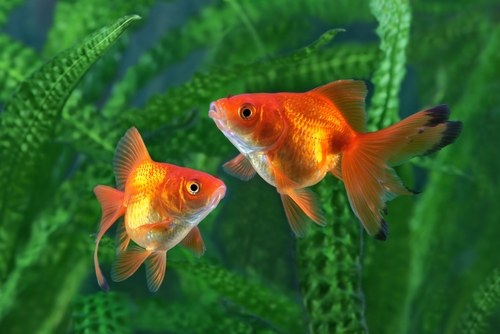
Goldfish mating behavior is something that takes some time to understand. But once you get the hang of it, you’ll have an easier time breeding goldfish in the future. This guide helps put you in a comfortable position for breeding goldfish.


